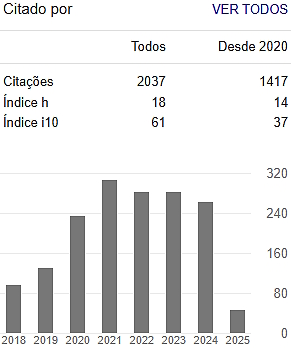COMPONENTES AGRONÔMICOS DO FEIJOEIRO SUPERPRECOCE BRS FC104 EM DIFERENTES ARRANJOS ESPACIAIS E ADUBAÇÕES FOSFATADAS
Keywords:
espaçamento entrelinhas, grãos por vagem, massa dos grãos, população de plantas, vagens por plantaAbstract
The adequate combination of row spacing with the number of plants per meter in front of different edaphoclimatic conditions is fundamental to obtain greater common bean yields. This work aimed to identify the best spatial arrangement and dose of monoammonium phosphate (MAP) to maximize the productive potential of very early BRS FC104 common bean cultivar. The experiments were conducted in Formosa, Cristalina, Santa Helena de Goiás and Santo Antônio de Goiás, Goiás, in a randomized block design with split plots and four replications. In the plots, five doses of MAP, 100, 150, 200, 250, and 300 kg ha-1, and, in the subplots, five plant populations, 6, 8, 10, 12, and 14 plants per meter were evaluated. Two experiments were carried out in each locality, one at 0.38 m spacing and another at 0.50 m spacing. The number of pods per plant was the grain yield component most affected by the spatial arrangement of plants, increasing its value with the increase in row spacing and the reduction in plant population, in all locals. The response of common bean yield to row spacing was variable, depending on the local and the dose of MAP. The plasticity of the grain yield components kept the common bean yield stable in relation to changes in the plant population, in all locals, except in Santa Helena de Goiás, where greater grain yield was obtained with about 14 plants per meter. Phosphate fertilization increased common bean yield in Santo Antônio de Goiás.
Downloads
Downloads
Published
Issue
Section
License
Copyright (c) 2019 Colloquium Agrariae. ISSN: 1809-8215

This work is licensed under a Creative Commons Attribution-NonCommercial-NoDerivatives 4.0 International License.

